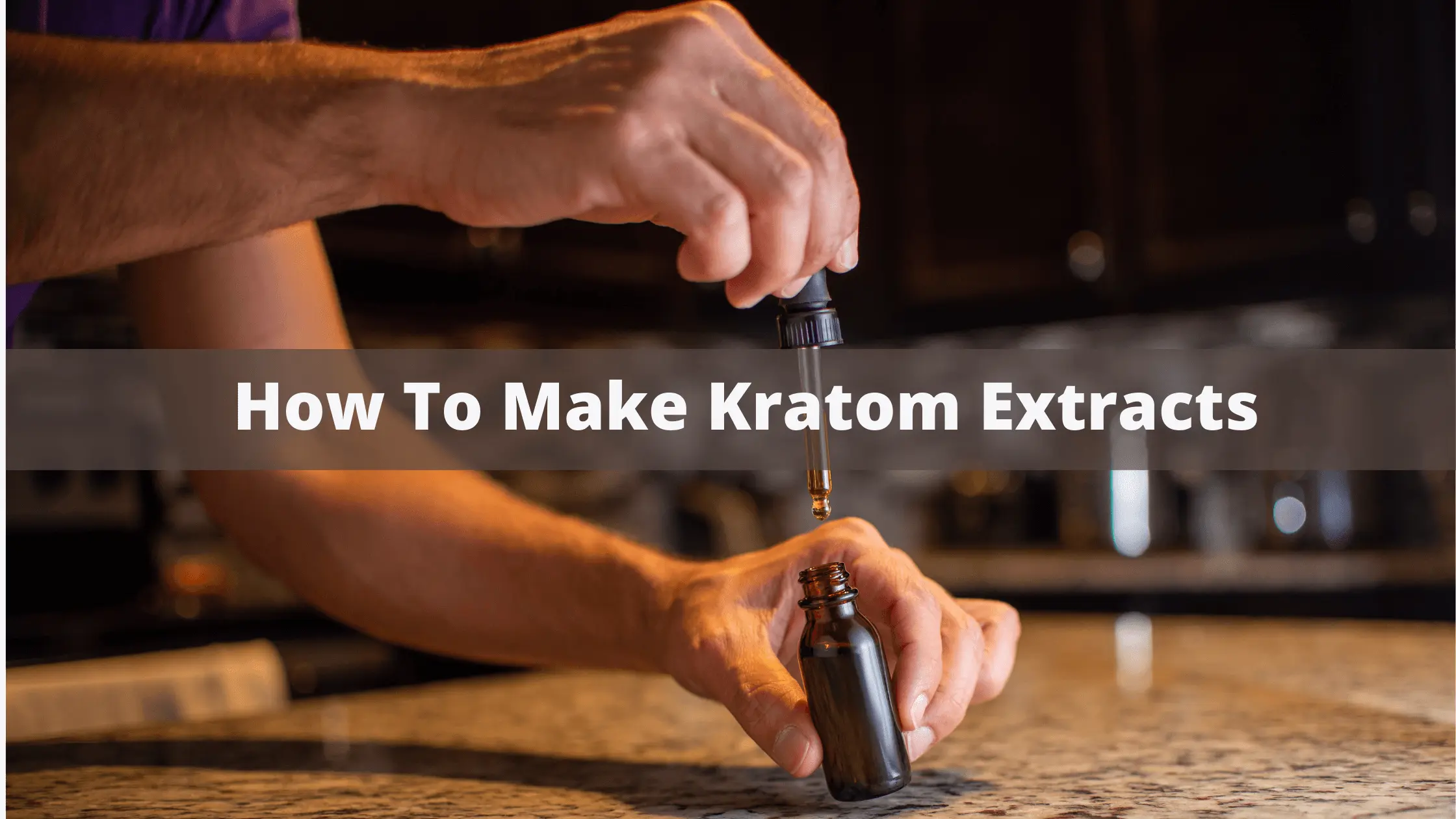
- Call: (725) 215-0109
- Email: support@organickratomusa.com
Rebranding launch sale: code FRESH20 for 20% off!
Free nationwide shipping over $79.00!

The most popular kratom products are powders, capsules, and extracts. Kratom powder tends to be the most economical choice, while capsules are very convenient for those individuals who lead busy lifestyles. However, kratom extracts are highly sought after but are not always offered by every vendor. This leaves a lot of kratom users wondering how to make kratom extracts. This is the number one reason why a lot of kratom users choose to make their extracts. It is a rewarding process that can be done right in your home.
In this guide, we will take a look at everything you need to know about kratom extracts so you can make the best decision on whether these products are right for you.
Please note that Kratom is not used to treat, cure, or mitigate any disease, illness, ailment, or condition. Please see FDA import alert 54-15. We make no representations as to intended use or suitability for use.
If you are looking for a concentrated form of Kratom, then you want an extract. An extract tends to be more potent than other forms of Kratom, which allows your product to go further. You will find that extracts have a robust alkaloid profile and can be distilled from kratom leaves or powder. The goal during the extraction process is to extract the alkaloids from the leaves or powder. There are three main types of extracts:
The conventional method of boiling involves boiling kratom leaves in water to draw out the active alkaloids. This technique produces a potent liquid extract, which can be condensed further to create kratom tea or a more concentrated resin. This uncomplicated approach maintains the complete range of alkaloids, offering a well-rounded effect profile.
Ethanol or another solvent is used in alcohol extraction to isolate Kratom’s active compounds. The process involves soaking the Kratom leaves in alcohol to dissolve the alkaloids. A concentrated kratom extract is left behind once the solvent is strained and evaporated. While this method is effective and can yield potent extracts, it requires careful handling due to the use of flammable solvents.
Supercritical CO2 extraction involves using carbon dioxide under high pressure and temperature to extract kratom alkaloids. This highly effective approach yields a pure, uncontaminated extract without harmful chemicals. It maintains the integrity of the alkaloids, leading to a top-notch product, but it necessitates specialized equipment and is more expensive than other methods.
Extraction using water entails combining kratom leaves with water and occasionally citric acid to aid in the dissolution of the alkaloids. The mixture is then heated and filtered, yielding a liquid extract that can be used as is or further concentrated. This approach is uncomplicated and safe, although it may not be as potent as alcohol or CO2 extracts, making it suitable for individuals seeking a milder effect.
To make Kratom extract, you will require certain materials:
A step-by-step guide to making Kratom extract:
Measure out the desired amount of kratom powder or leaves. Initially, you can take 100 grams of Kratom. Also, measure out enough water to cover the Kratom in the pot, usually around 1 liter.
Add citric acid or lemon juice to the water. The acidity helps to break down the Kratom’s cell walls and extract the alkaloids more effectively. Use approximately 1 teaspoon of citric acid or the juice of one lemon per liter of water.
Add the kratom powder or leaves to the pot with water. Stir thoroughly to make sure the Kratom is completely soaked. Heat the mixture over low to medium heat and let it simmer (not boil) for approximately 20-30 minutes, stirring occasionally.
Once it has simmered, pour the liquid through a fine strainer or cheesecloth into a heat-resistant container to separate the kratom plant material. Squeeze the plant material to extract as much liquid as possible.
Return the strained liquid to the pot. Simmer it on low heat to reduce the volume, concentrating the extract. Depending on how concentrated you want the extract to be, this can take anywhere from 30 minutes to several hours.
After the liquid has been reduced to the concentration you want, allow it to cool. Transfer the kratom extract to a dark glass bottle or a container with a secure lid to maintain its potency. Keep it in a cool, dark location.
If you are still unclear about the process, you can also see this video titled “How to make Kratom Extract.”
There are several benefits and risks which is associated with Kratom extracts. Some of them are:

It is essential to store Kratom extract properly to maintain its potency, effectiveness, and safety over time. To do so, store kratom extract in a cool, dark place away from direct sunlight and heat sources to prevent alkaloid degradation. Airtight containers, preferably glass with tight-fitting lids, help minimize oxygen exposure. It is crucial to control humidity, so adding desiccant packets to the container can help absorb excess moisture. For long-term storage, refrigeration can be beneficial, but frequent temperature changes should be avoided to prevent condensation. It’s important to properly label containers with extraction or purchase dates and kratom types for easy tracking.
Keep Kratom extract out of reach of children and pets, and use clean utensils to prevent contamination. Periodically check the extract for any color, smell, or consistency changes that could indicate degradation or contamination. By following these guidelines, users can ensure their kratom extract remains in optimal condition, preserving its quality and maximizing its benefits.
When using kratom extracts, it is crucial to consider the dosage because they are more potent than regular kratom powder. Begin with a small dose, usually between 0.5 and 1 gram of extract, to understand how your body responds and avoid harmful effects. Depending on the strength of the extract, this amount may be similar to a higher dose of raw kratom powder. Gradually modify the dosage as necessary, but do so carefully to prevent building tolerance and dependency. It’s crucial to observe how your body reacts and refrain from consuming large doses, as they can cause adverse effects such as nausea, dizziness, and drowsiness. Seeking advice from a healthcare professional for personalized dosage recommendations is recommended, especially if you are new to kratom extracts or have underlying health issues.
Hope this blog on “how to make kratom extract” will help you. If you are looking for a premium quality Kratom but are having an issue finding it with a perfect online vendor, you can buy your Kratom according to your needs. At OKUSA, you will find a variety of Kratom strains and vein colors in powders and capsules. If you have any questions when shopping on our website, please do not hesitate to contact us. We hope that this blog has answered your questions about how to make kratom extracts.
The storage life of Kratom may vary from 1 to 3 years if it is appropriately stored in a cool, dark location in airtight, opaque receptacles.
The legal age of Kratom may vary according to state. Check the local laws and regulations before purchasing.
You can make Kratom extract at home using various extraction methods such as water-based, alcohol-based, or supercritical CO2 extraction.
We promise to ship your order within 1-3 days after you place your order.
Yes, at OKUSA, you will get lab-tested and pure Kratom products. To know more about this, click here.
